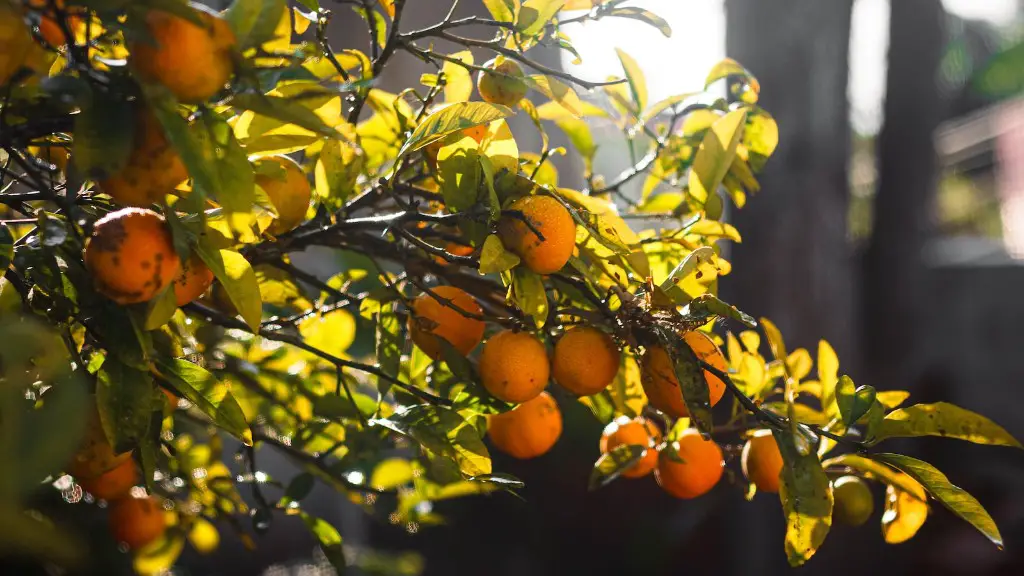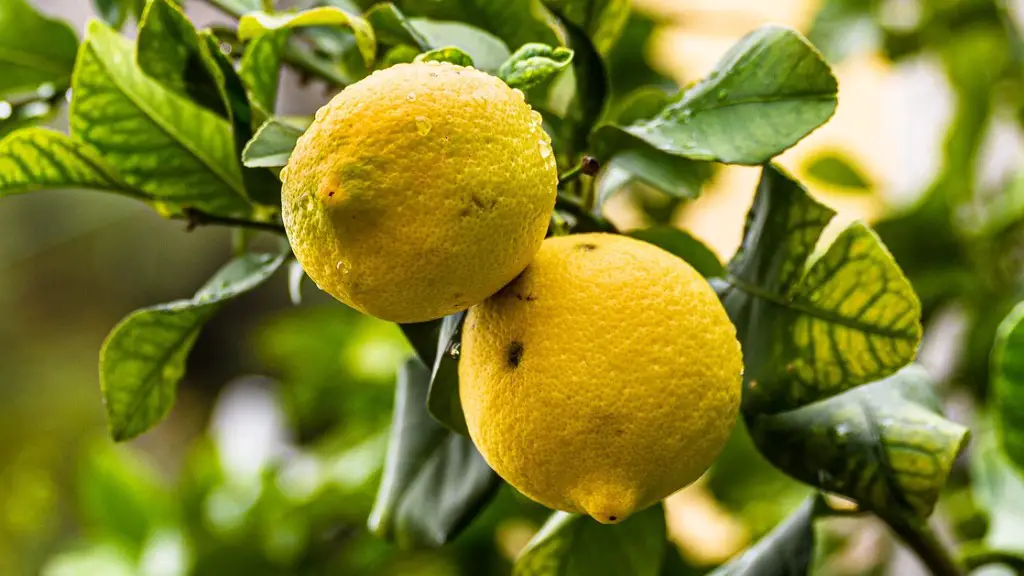Fertilizing palm trees requires careful consideration, as the wrong type of fertilizer or incorrect application can do more harm than good. Nuisance pests such as mealy bugs, scale and mites can be attracted to palms that receive too much nitrogen. As such, proper palm tree fertilizer selection, as well as its application process, is essential for healthy and strong growth.
To effectively fertilize pal trees, there are a few key considerations that need to be taken into account. Firstly, it’s important to ensure that the fertilizer is specifically formulated for use on palms. These fertilizers contain a higher nitrogen content to promote healthy growth, often at the lower dosage rate than typical fertilizers used on other plants. Additionally, many fertilizers designed for palms contain a higher amount of micronutrient elements, such as iron, magnesium and manganese, which help nourish and strengthen the palm’s leaves as well as its overall health.
It’s a good idea to conduct a soil test before applying any fertilizer to a palm tree, as this will indicate which soil nutrients are already present in the soil, and what kind of fertilizer is the most suitable for use. Soil tests are conducted by taking a soil sample and sending it to a soil testing lab, where the soil nutrient analysis is carried out. If a soil test shows that there is an adequate amount of soil nutrients already present in the soil, palm tree fertilization can be deferred until the nutrients begin to deplete.
When it comes to applying the fertilizer, the timing is essential. Typically, palms should be fertilized twice per year, once in the spring and once in the fall. For those living in areas with particularly warm climates, palms should be fertilized in the summer as well. It’s important that the fertilizer is applied evenly across the entire root zone of the palm tree. This can be done either by hand or using a fertilizer spreader. Once the fertilizer is applied, it’s important to water it in with a slow and even-distributed stream of water.
It is also important to take note of the manufacturer’s recommended dosage of fertilizer for palms, as it may vary depending on the size and health of the palm. An experienced horticulturist or arborist can be consulted if there’s any confusion regarding the dosage rate. Additionally, it’s important to be aware of local laws regarding fertilizer application, as these may have an impact on the kind of fertilizer and its dosage rate that can be used on a palm tree.
Using Fertilizer to Strengthen Palm Trees
Appropriate use of fertilizer is a good way to strengthen and promote robust foliage on a palm tree. Palms require higher amounts of nitrogen and micronutrients to ensure the health of its leaves. Fertilizers specifically designed for palms contain higher levels of these nutrients, which help promote strong and healthy new leaf growth. Additionally, appropriate fertilization will help reduce the chances of the palm succumbing to disease, infestations, or nutrient deficiencies.
When fertilizing a palm tree, it’s important to ensure that the fertilizer is applied correctly– from both a technical and legal standpoint. This means having an understanding of the types of fertilizers available, the correct dosage amounts, and having a plan in place to evenly distribute the fertilizer across the root zone. Additionally, it’s important to be aware of any laws or regulations in place in regards to the use of fertilizer in the local area, as these may restrict the types of fertilizers that can be used.
For those palm tree owners who are unsure of the fertilization process, it can be beneficial to hire a specialist arborist or horticulturist. Not only will they have the experience, knowledge and resources to correctly fertilize a palm tree, but they will also be able to provide advice and suggestions regarding the health of the tree.
Preventing Nutrient Overload
Applying too much fertilizer can cause a ‘nutrient overload’, which can be damaging to the palm. Additionally, it can attract nuisance pests such as mealy bugs, scale, and mites to the palm tree, leading to further issues. Nutrient overload can be avoided by following the manufacturer’s recommended dosage of fertilizer for the particular size and health of the palm tree, and ensuring that it is evenly distributed throughout the root zone.
Fertilizer is an essential component of palm care, and regular fertilization is the key to strong and healthy palms. However, it is important to remain mindful when selecting the right type, dosage, and timing of fertilizer application. By doing so and following the proper steps, palms can remain healthy and manageable all year round and provide owners with years of enjoyment in the garden.
Organic Fertilizers for Palms
Organic fertilizers are a great option for those wishing to promote sustainable practices within their garden. Natural and organic fertilizers, such as compost and seaweed, are rich in essential nutrients and promote healthy plant growth and a thriving soil ecosystem. However, it’s important to note that organic fertilizers are slow to release nutrients and may not be as effective as a chemical fertilizer. As such, they may need to be applied more frequently—every four to six weeks.
Organic fertilizers may need to be supplemented with additional nutrients, in the form of a basic N-P-K fertilizer. Organic fertilizers are also not specifically formulated for palms and may not contain the higher levels of micronutrients that the tree needs to thrive. However, organic fertilizers are generally considered to be much safer for the environment, and for those looking to promote sustainable and eco-friendly gardening practices, organic fertilizers can be a great way to do this.
Alternatives to Fertilizers
Sometimes, regular fertilizer use may not be necessary for a palm tree if it is planted in an area with nutrient-rich soil. If a soil test indicates that the soil contains an adequate amount of necessary nutrients, then the use of a fertilizer can be delayed until levels start to become depleted. Additionally, organic matter, such as compost or mulch, can also be applied to the soil as a natural source of nutrients, while still promoting a healthier soil ecosystem.
If nutrient levels in the soil start to become depleted, other methods of supplying nutrients to a palm tree can be used, such as injecting fertilizer directly into the root zone or manually fertilizing palm trees. Direct application of fertilizers can be effective in providing the exact amount of nutrients a palm needs and helps promote a healthier tree.
Alternatively, regular applications of liquid fertilizer can be used in conjunction with a regular fertilization regime, where a fertilizer is applied every few weeks. Liquid fertilizers can be easily absorbed by the tree’s roots and are less likely to attract nuisance pests. Liquid fertilizers also provide an extra boost of micronutrients, further helping to enhance the tree’s growth rate.
Encouraging Healthy Palms
Using the right type of fertilizer and applying it at the right time and dosage rate are essential steps in ensuring the health of a palm tree. However, other aspects need to be taken into account to further promote healthy growth. Firstly, adequate sunlight is essential for healthy palms. Palms that are planted in too much shade will require more attention in terms of fertilization and pruning to generate the desired healthy foliage.
In addition, sufficient irrigation is also important for healthy palms. If a palm is not watered often enough, it will struggle to draw up the necessary resources from the soil, leading to secondary issues such as pest infestation. Additionally, palms may also require pruning to ensure that old and dying fronds don’t sap the tree’s resources and inhibit healthy new foliage.
Overall, fertilizing palm trees is an essential part of ensuring the health and growth of the tree. However, it is important to consult an expert arborist or horticulturist if inexperienced in the process, as well as to adhere to any local laws and regulations. With the right type of fertilizer, appropriate application and the implementation of other essential palm care practices, a palm tree can remain healthy and thrive for many years.




